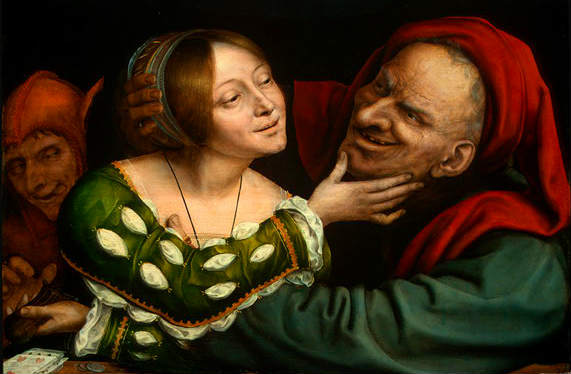Search::
Artists
Alphabetically
Artists by
Country
Artists by
Century
Artists by
Movement
Guild of
Saint Luke
Saint Luke was the the patron saint of artists
In the 14th, 15th and 16th century most artists and craftsmen were members of the great artist guild of St. Luke. The guilds of St. Luke operating in Antwerp and Bruges were extremely influential in not just the local art scene but politics as well. According to author and historian Ernest Gilliat-Smith, "Amongst the illuminators enrolled in the Guild of St. Luke were all sorts and conditions of men; from polished courtiers like Jan van Eyck to men doubtless of as questionable character as the obscure individual, half artist, half perhaps fortune teller, though, for the matter of that, he swore on the damnation of his soul he had had no dealings with familiar spirits, whose vagabond life the rack of Tristam has revealed to us. But whatever their social rank may have been, like the monks who worked alongside of them, the cloister was the rock from which they were hewn, and ‘the exquisite work which some of them produced is sufficient to alone explain the origin of Flemish panel painting."

Ill-Matched Lovers c.1520 by Quentin
Massys
Important Northern Renaissance Artists
Pieter Brueghel the Younger (1564 - 1638) Flemish
Lucas Cranach the Elder (1472 - 1553) German
Matthias Grünewald (1434-1494) Flemish
Hans Holbein the Younger (1497-1543) German
Rogier van der Weyden (1399-1464) Dutch
Jan van Eyck (1385 - 1441) Flemish
Robert Campin 1375-1444 Dutch
Hans Melming 1434-1494 German
Petrus Christus (1420–1476) Netherlandish
Jan Provoost (1465–1529) Flemish School, Netherlandish
Hugo Van Der Goes (1430-1482)
Joos van Cleve (1485 – 1540) Netherlandish
Joachim Patinir (1480 –1524) Flemish School
Michael Wolgemut (1434–1519) German
Michael Pacher (1435– 1498) Austrian
Colijn de Coter (1445–1532) Netherlandish
Gerard Horenbout (1465 - 1541) Flemish School,
Jean Malouel (1365-1415) French Early Netherlandish
Hieronymus Bosch (1453 - 1516) Dutch
Dieric Bouts the Elder (1413-1475) Dutch
Important Words, People, Phrases, Characteristics related to the Northern Renaissance Art Movement - allegorical painting, rebirth, invention of oil painting, Hieronymus Bosch, Limbourg Brothers, Desiderius Erasmus, Robert Campin, Jan Van Eyck, Jean Fouquet, Albrecht Dürer, Johannes Gutenberg, Johann Reuchlin, Martin Luther, rise of the merchant class, world landscape, Low Countries, Protestant Reformation, Calvinisim, glazing, impasto, scriptorium, illuminator, invention of the printing press, woodcuts, engravings, Antwerp School, Guild of Saint Luke, commerce, Flemish School, Northern Europe, Flanders, Bruges, renewed interest in classical learning, mythological scenes, genre painting, landscapes, portraits, moralizing overtones, human vices, lust, paradise, spirituality, piousness, living a simple life, reform, Human Reasoning, tradesmen at work, idyllic scenes of peasants, playing games, feasting, linear perspective, \Heliocentric Theory, humour, satire, spiritually significant, illuminated manuscript, idealized biblical themes, scriptorium, emotion, illuminator, iconoclast, Age of Discovery, Virgin and Child, axonometric drawing, curiosity about the natural world, realistic use of colours and light, Old Testament stories, Gospel parables, The Blackdeath, Christian symbolism
© HistoryofPainters.com
2017